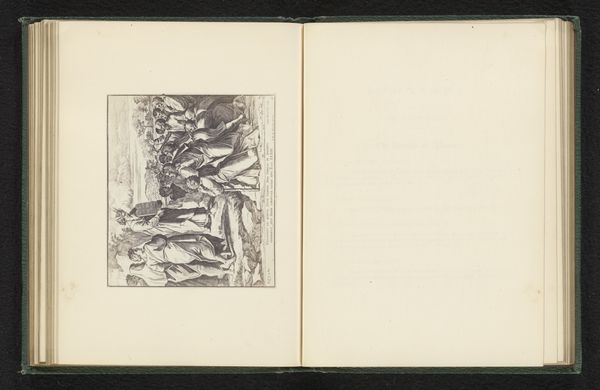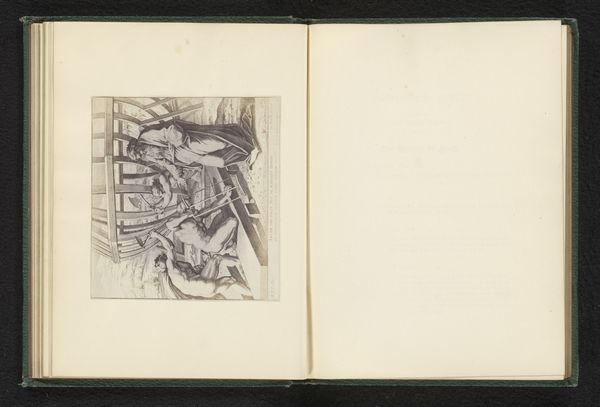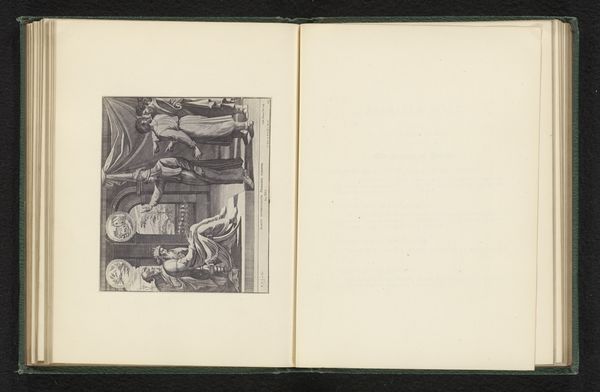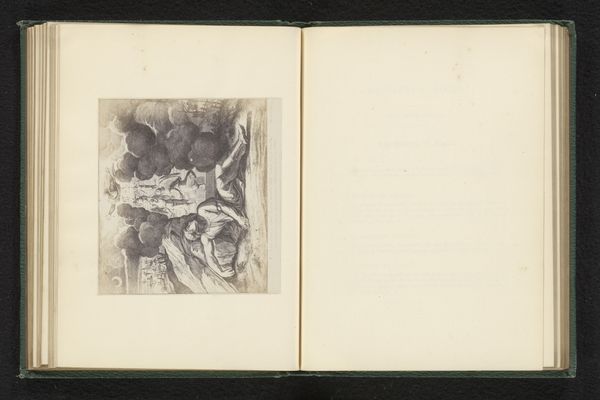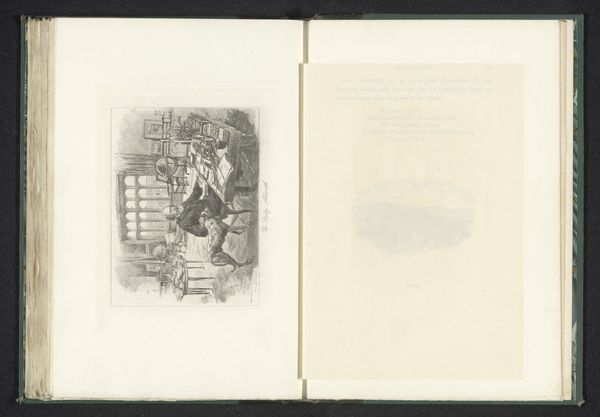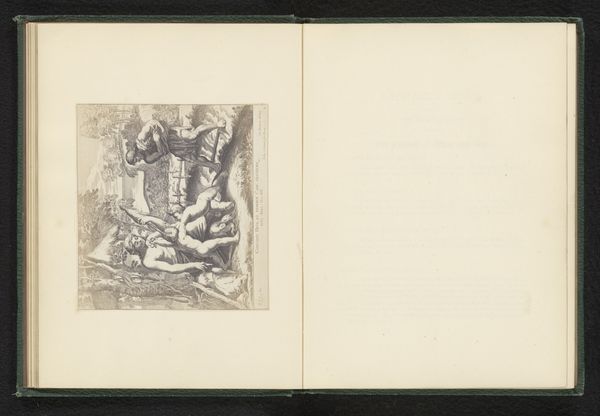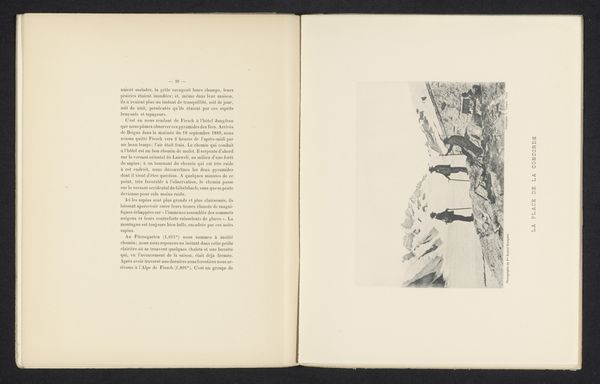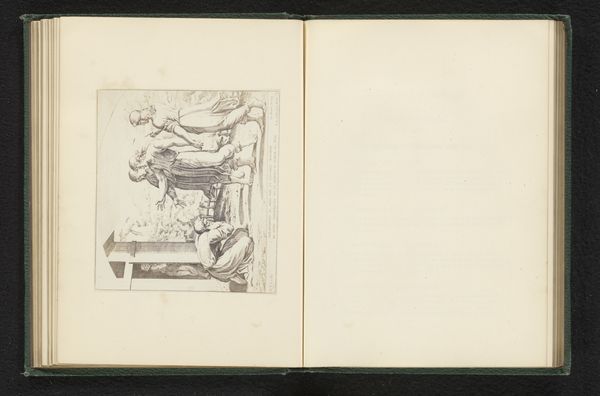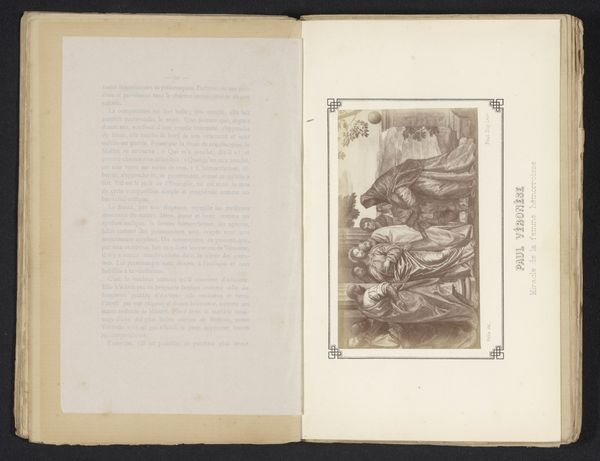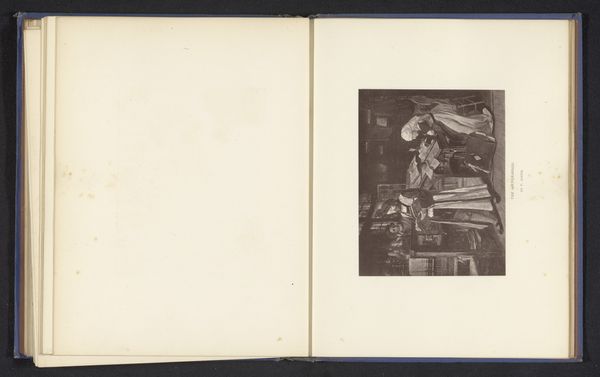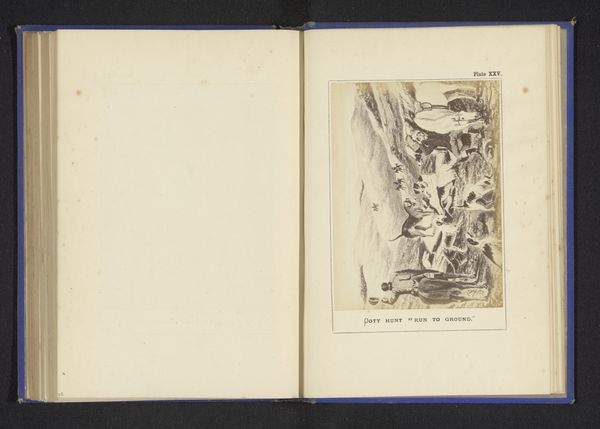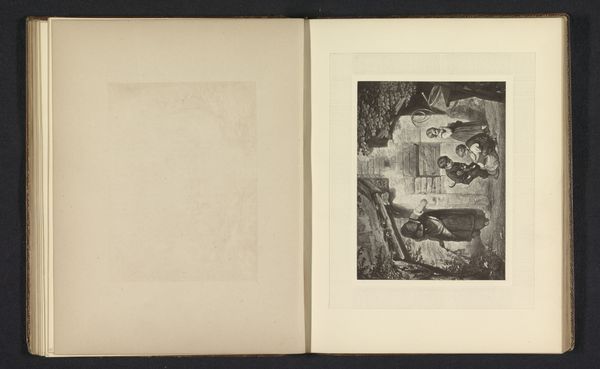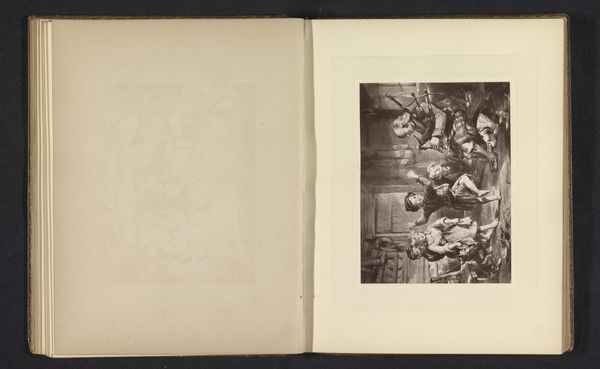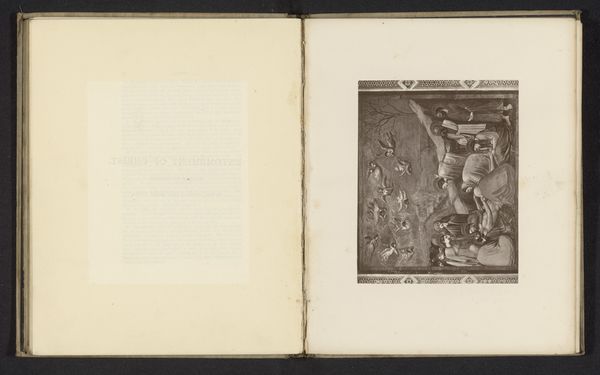
Fotoreproductie van een prent naar een tekening door Rafaël van de zegening van Esau before 1868
0:00
0:00
drawing, print, paper, ink, engraving
#
drawing
#
pen drawing
#
ink paper printed
# print
#
figuration
#
paper
#
ink
#
history-painting
#
italian-renaissance
#
engraving
Dimensions: height 103 mm, width 112 mm
Copyright: Rijks Museum: Open Domain
Editor: Here we have an old print dating from before 1868, "Fotoreproductie van een prent naar een tekening door Rafaël van de zegening van Esau", so a photo reproduction of a print of a drawing by Raphael of the blessing of Esau. It appears to be ink on paper. It has a very classical feel. How do you read this piece? Curator: As a materialist, I'm drawn to consider the layered production of this image. It's not just about Raphael's initial artistic vision, but about the reproduction process itself. This is, as the title indicates, a *fotoreproductie*, calling our attention to the many hands and methods that led to its final form, including engraving, printing, and photographic techniques. How might those processes shape our understanding of the original subject, or obscure Raphael's intent? Editor: That's interesting. So, you're focusing more on the later stages of creation than Raphael's initial drawing? Curator: Precisely. The availability of reproductions like this dramatically changed the art world and broader society. Printmaking facilitated the democratization of images; photographs allowed for their mass dissemination. It’s crucial to examine the labor, materials, and modes of consumption involved. Where was this printed and for whom? How might such prints allow one to engage with artwork at a distance from the place or class that original artwork required? What does this image do? Editor: So, seeing it as more of a historical artifact than a purely artistic one? Curator: In a sense, yes. It serves as a fascinating record of artistic processes, consumer culture, and the changing value and accessibility of images over time. What's also telling is that the photograph focuses not on an original Raphael work, but an engraving that was "naar een tekening"—after a drawing. Each stage removes us and provides a filter from what we consider to be "art". Editor: I hadn't thought about it that way. Thanks for that different perspective! Curator: My pleasure. Considering art through the lens of its production and dissemination allows for a more complete and socially grounded understanding.
Comments
No comments
Be the first to comment and join the conversation on the ultimate creative platform.
